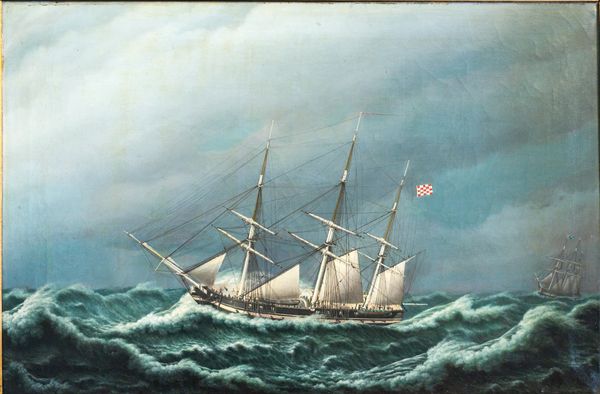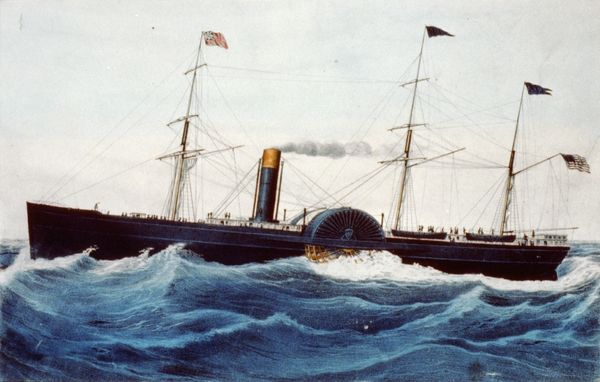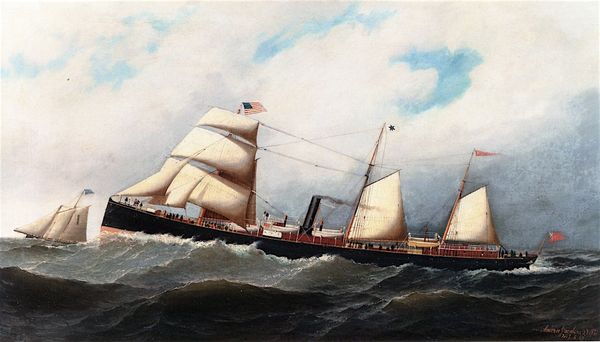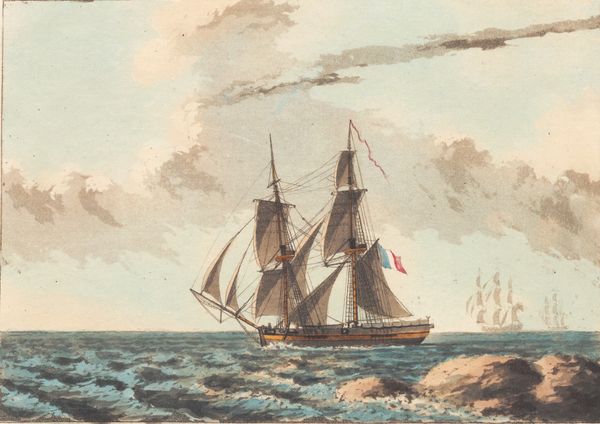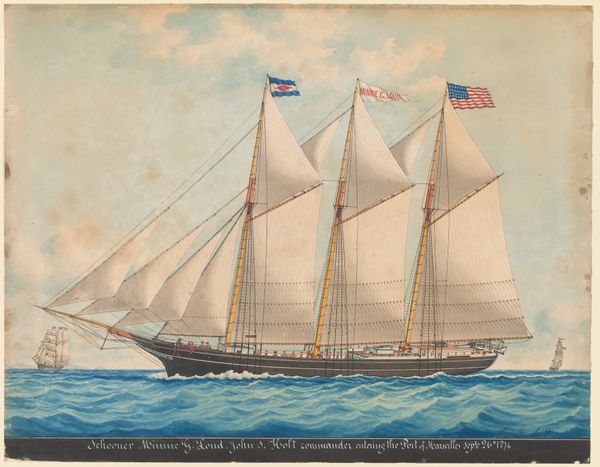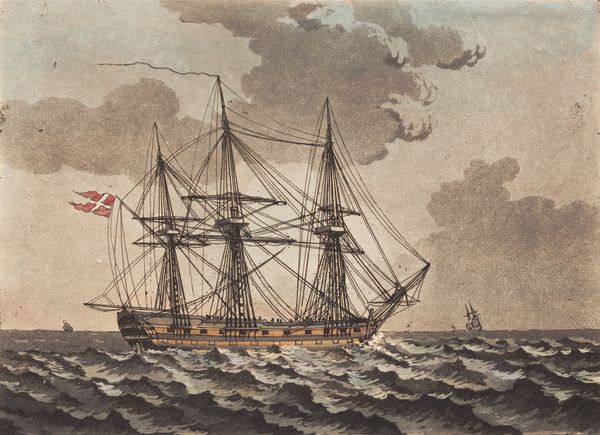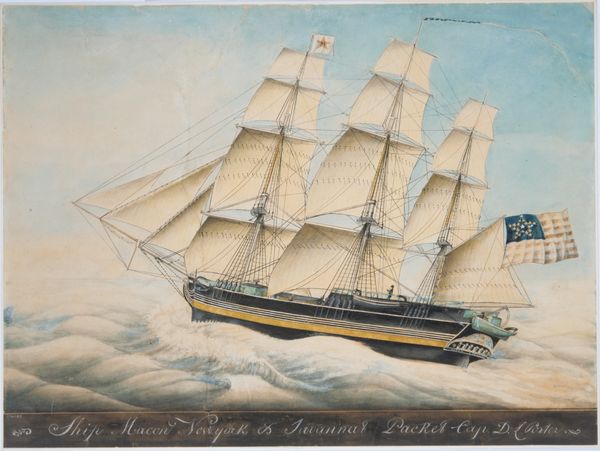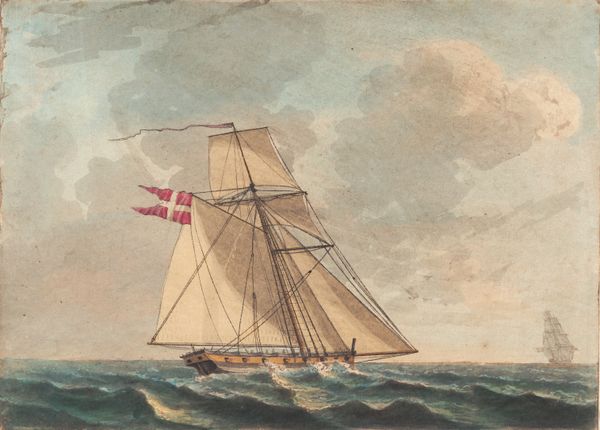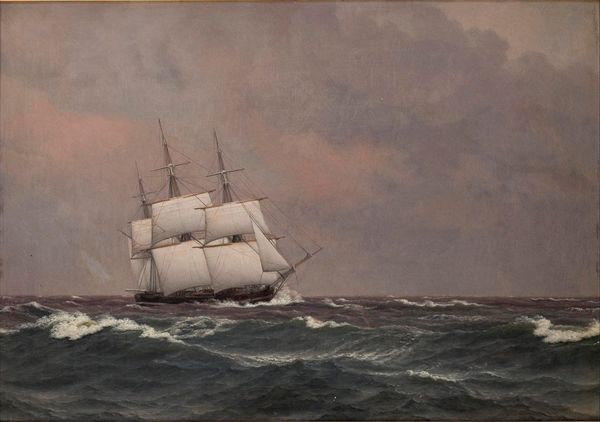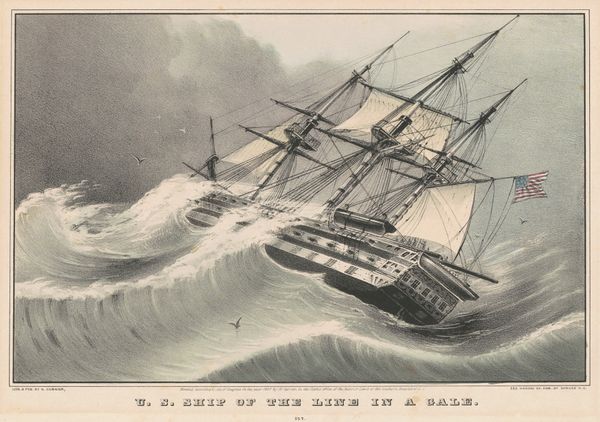
Copyright: Public domain
Editor: Here we have Currier and Ives' "U.S. Sloop of War Albany, 22 guns," a watercolor print from 1856. It's quite dramatic, the ship seems to be battling a storm. What historical contexts inform your interpretation of this piece? Curator: Well, the romanticism apparent in the portrayal of man versus nature cannot be separated from American expansionist narratives of the 19th century. Consider Manifest Destiny. This print lionizes a U.S. warship. Editor: How so? I mostly see it struggling! Curator: Exactly. Even in struggle, the ship, and by extension, the nation, are depicted as powerful, resilient. What do you notice about the detail? The meticulous depiction of the ship compared to the more gestural rendering of the waves? That reinforces the ship's importance, literally centering the American project and the implied "right" to dominate the seas. And beyond that, domination of resources and Indigenous people. This imagery helped normalize and glorify the expansion. Editor: So it's not just a picture of a ship; it's tied to a specific political agenda? Curator: Precisely. This artwork can serve as a potent visual tool for engaging conversations on US maritime and expansionist history, touching on themes of power, technology, and the human-nature relationship, which are essential when considering American identity and its impact on the globe. What new insights has that perspective given you? Editor: I hadn't considered the political dimension so directly, now it's hard to miss! I'll definitely approach Currier and Ives with a more critical eye going forward. Curator: Wonderful. Remembering context transforms appreciation.
Comments
No comments
Be the first to comment and join the conversation on the ultimate creative platform.
